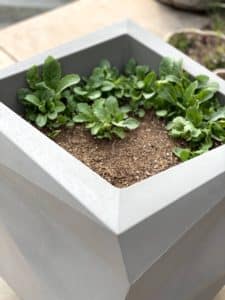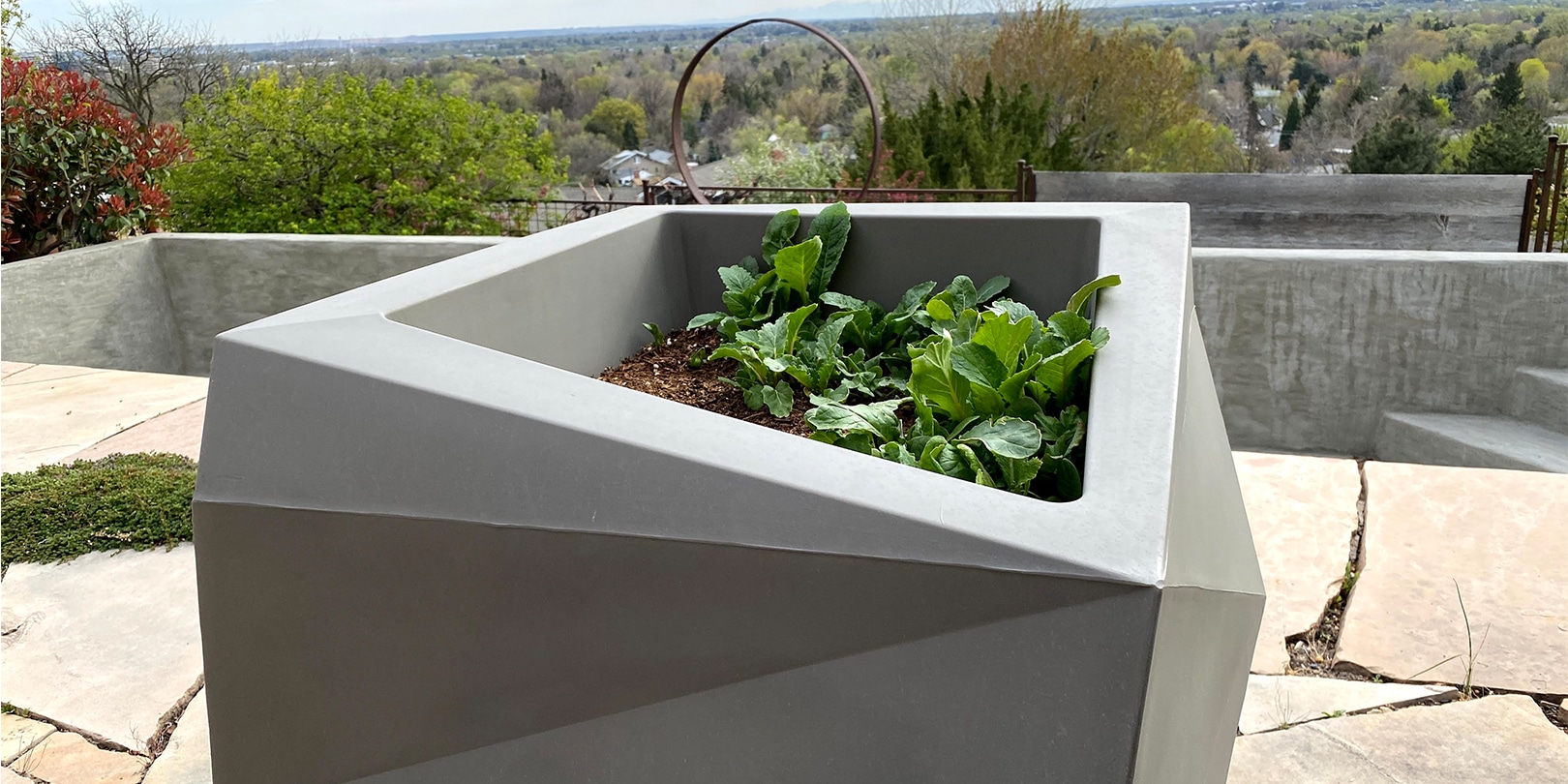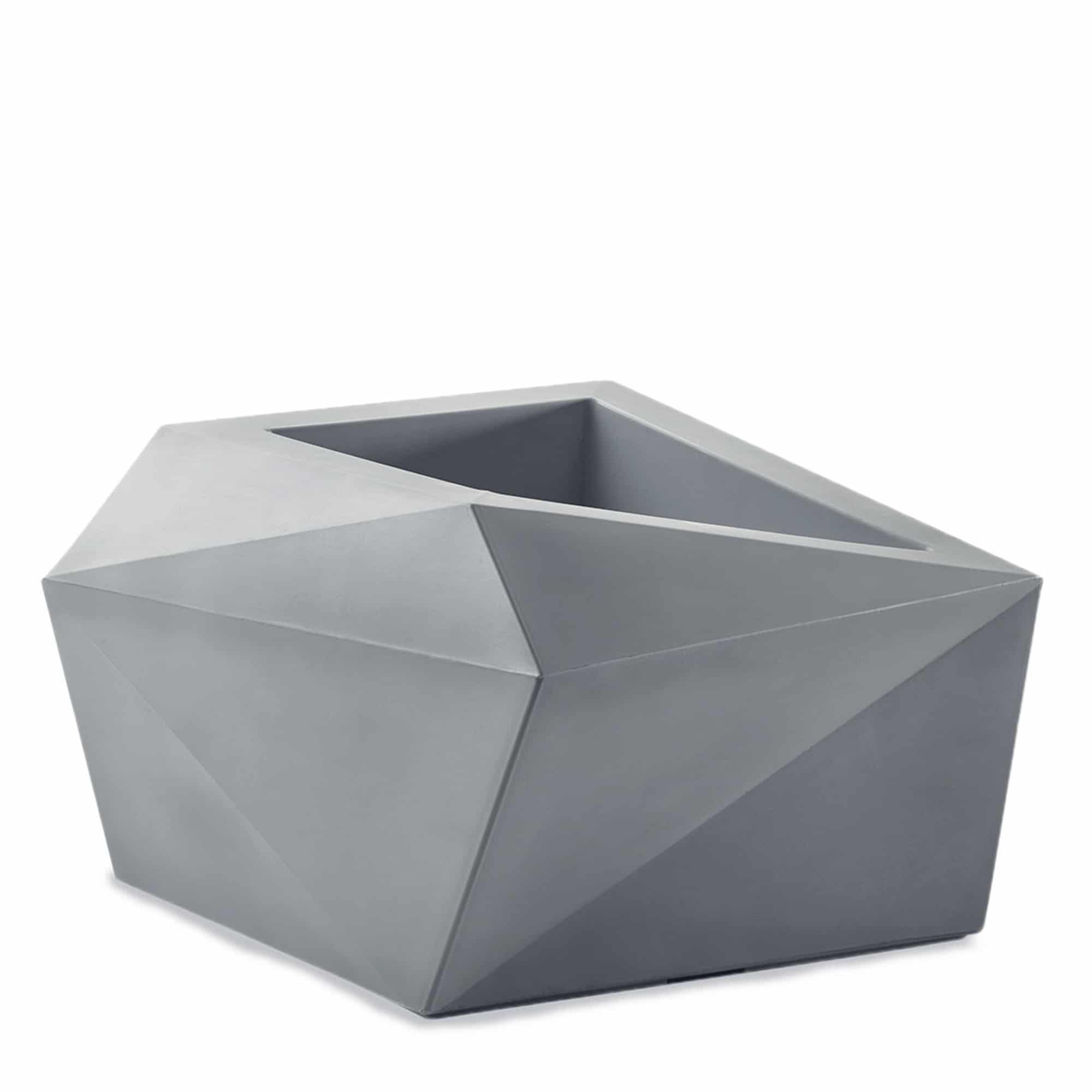We tend to push the envelope here in Idaho, both in weather and design. Last year, when the pandemic interrupted all sorts of supply chains and access to grocery stores was limited, all I could think about was a fresh salad, and a fresh salad every day. I promised myself I would get the salad greens growing early this year. This jumbo Crescent ‘Origami’ planter is my new container gardening space for all things salad!
Inspired by the folds created in the tradition of Origami, and filled with planting mix, the jumbo, food-safe planter fits handsomely into our modern, water-wise garden setting. I am especially happy with the double-walled feature of the planter. The mountain states where I am based are notorious for whiplash weather, with daytime temperatures in the ’70s and ’80s during the day dropping to below freezing at night. We may be forced to put a piece of frost cloth over the top of the tender new leaves when they pop through the soil, but that’s not a worry. The Origami planter came pre-drilled for drainage, too!
Here’s how this container gardening project came together:
We used a large bag of premium organic planting mix and half a bag of organic compost for a total of almost 2 cubic feet of planting mix and a 3 part soil to 1 part compost ratio.
I planted my combination of Vivid Choi (Hudson Valley Seed), Mesclun Lettuce mix (Botanical Interests), Matador Spinach, and Arugula Red Dragon (both from Botanical Interests). Because the different packets had instructions for sowing seeds from ¼ to ½ inch deep, we just simply placed them on top of the soil and lightly tapped the surface after planting. We covered them with about ¼ inch more soil –patted the surface again to ensure the seeds made good contact with the soil, and watered them in.
Since the seeds can sprout anywhere from 5 to 15 days from planting, we should be having tasty salad sprouts or “microgreens” in 2 weeks and tender, organically grown salads in 3 to 4 weeks, depending on the outside temperatures. I am thinking it might be fun to tuck a few purple carrots into this pot, too.

I am counting on the double walls of the Origami planter keeping the soil a little warmer than the ground would be, as well as keeping the soil a little moister – always good for seedlings. Add to all the other attributes (lightweight, incredibly stylish, double-walled, pre-drilled drainage holes) the Origami planter is made of a recyclable material, which tells me it will keep the soil moisture a little more consistent – better for the sprouting greens.
Once I can see where the seeds sprout, and we’ve had a chance to harvest a few to add to our plates, I’ll tuck in a few seeds of calendulas for the zippy orange color of the petals. They should look especially festive with the red lettuces. For the calendulas and carrot seeds, use a chopstick to poke a little hole in the soil. Clever? I thought so, too.
When it gets really hot here, I am thinking the planter will be perfect on a rolling saucer, enabling us to move it easily (even when full of soil), into the shade if we must, but also closer to the patio table for other herbs at dinner time. Or even a cocktail hour. Just look at this pretty:

Dianthus ‘Rainbow Loveliness’ floating with mint in an adult beverage.
I’ll keep you posted on my homegrown salad, as well as the cocktail pretties, so keep an eye out for updates.



